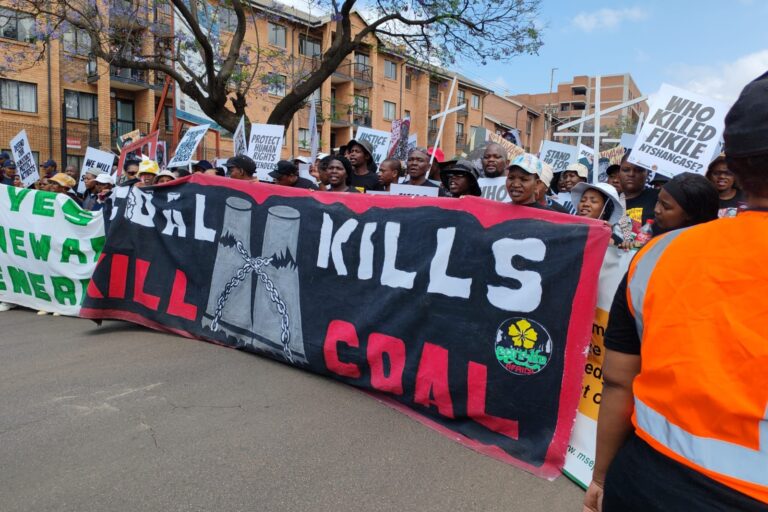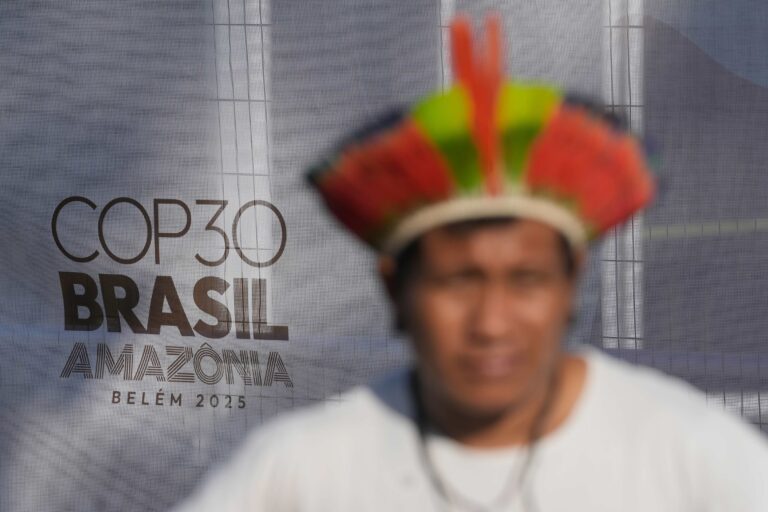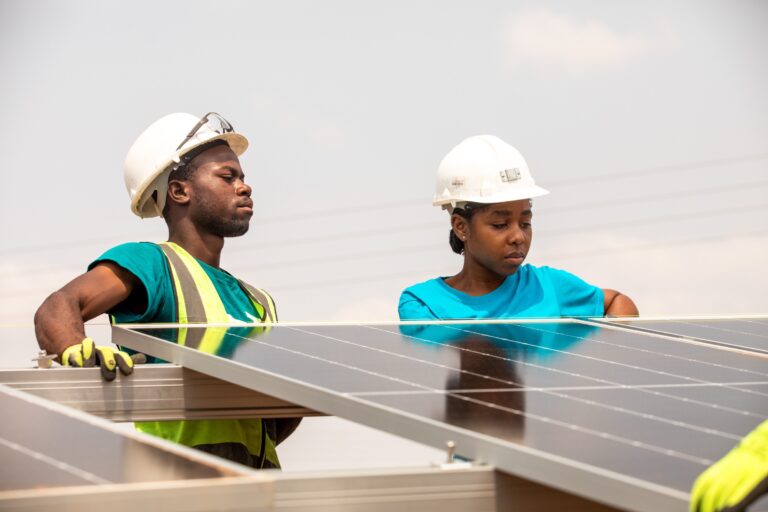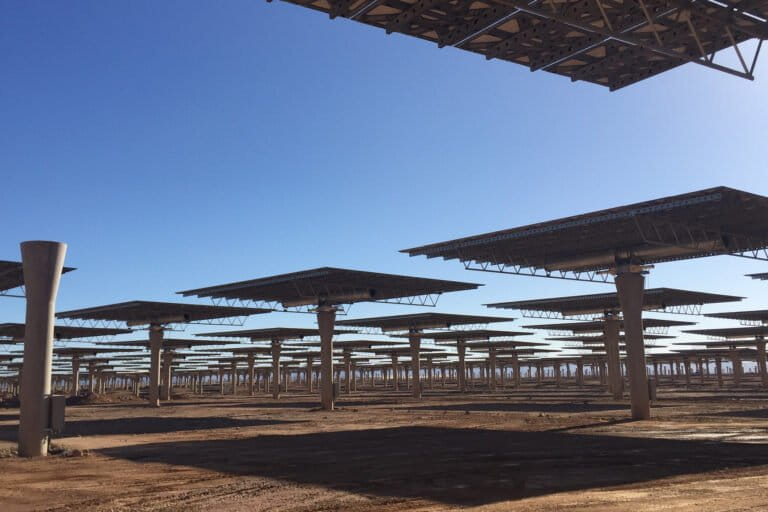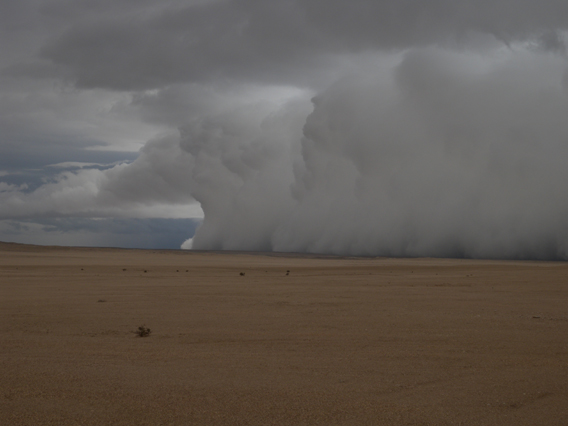
A shelf cloud passes over one of the driest regions on the African continent: the Namib desert. The shelf cloud is associated with a high-precipitation supercell thunderstorm. Photo courtesy of NASA.
While record crests of the Mississippi River are creating havoc in the southern US, this is not the only region in the world facing unprecedented flooding. Huge rain events have produced floods in southern Africa as well, impacting Namibia, Botswana, and South Africa.
Since last year rainfall has been above average in much of these regions, including a record deluge this month in Namib Desert, where more rain fell in just one day in than usually does in an entire year.
The flooding has not been without its human consequences. In Namibia at least 62 people have died while hundreds of thousands have been impacted, and at least 5,000 are living in temporary shelters. With the rising waters are also fears of water-borne illness growing, such as malaria.
Namibia is proposing to build canals to deal with future flooding. Henock Kankoshi, a member of Namibia’s National Council, recently said canals were necessary because , “We are still going to experience heavy rains and floods in the years to come due to global warming and climate change.”
In a warming world due to climate change, climatologists have predicted that floods worldwide will increase both in frequency and intensity. While it is difficult to link a single extreme weather event to climate change, researchers are moving forward on how floods, such as those in the US and south Africa, may be in part linked to higher temperatures.
“It’s not the right question to ask if this storm or that storm is due to global warming, or is it natural variability. Nowadays, there’s always an element of both,” climatologist Kevin Trenberth of the National Center for Atmospheric Research told the New York Times last year in a front-page story on the connections between extreme weather and climate change.
A recent study broke new ground by finding that climate change had increased the likelihood of a devastating 2000 flood in the UK by two to three times.
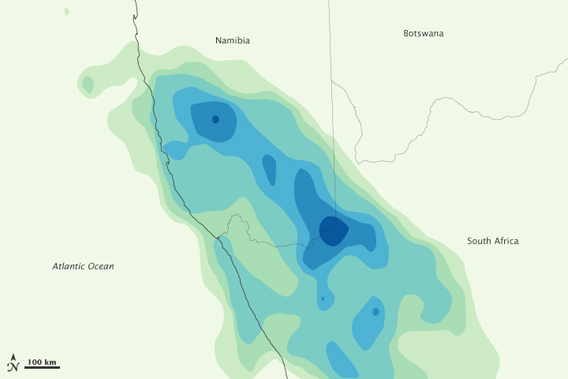
From a multi-satellite analysis, rainfall on May 5th, 2011. From green to blue, rainfall estimates range from 0.8 inches (20 millimeters) to 2.8 inches (80 millimeters). In the Namib desert at the coast, usually less than an inch (20 millimeters) falls annually. Image courtesy of NASA.
Related articles
Are US floods, fires linked to climate change?
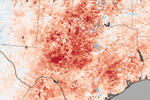
(04/28/2011) The short answer to the question of whether or not on-going floods in the US Midwest and fires in Texas are linked to a warming Earth is: maybe. The long answer, however, is that while it is difficult—some argue impossible—for scientists to link a single extreme weather event to climate change, climate models have long shown that extreme weather events will both intensify and become more frequent as the world continues to heat up. In other words, the probability of such extreme events increases along with global average temperature.
Death toll rises in New Guinea flash floods linked to deforestation
(10/09/2010) The death toll from flash floods in Wasior, West Papua has now topped 100, reports the Jakarta Post.
Officials point to Russian drought and Asian deluge as consistent with climate change
(08/08/2010) Government officials are pointing to the drought and wildfires in Russia, and the floods across Central and East Asia as consistent with climate change predictions. While climatologists say that a single weather event cannot be linked directly to a warming planet, patterns of worsening storms, severer droughts, and disasters brought on by extreme weather are expected as the planet warms.







